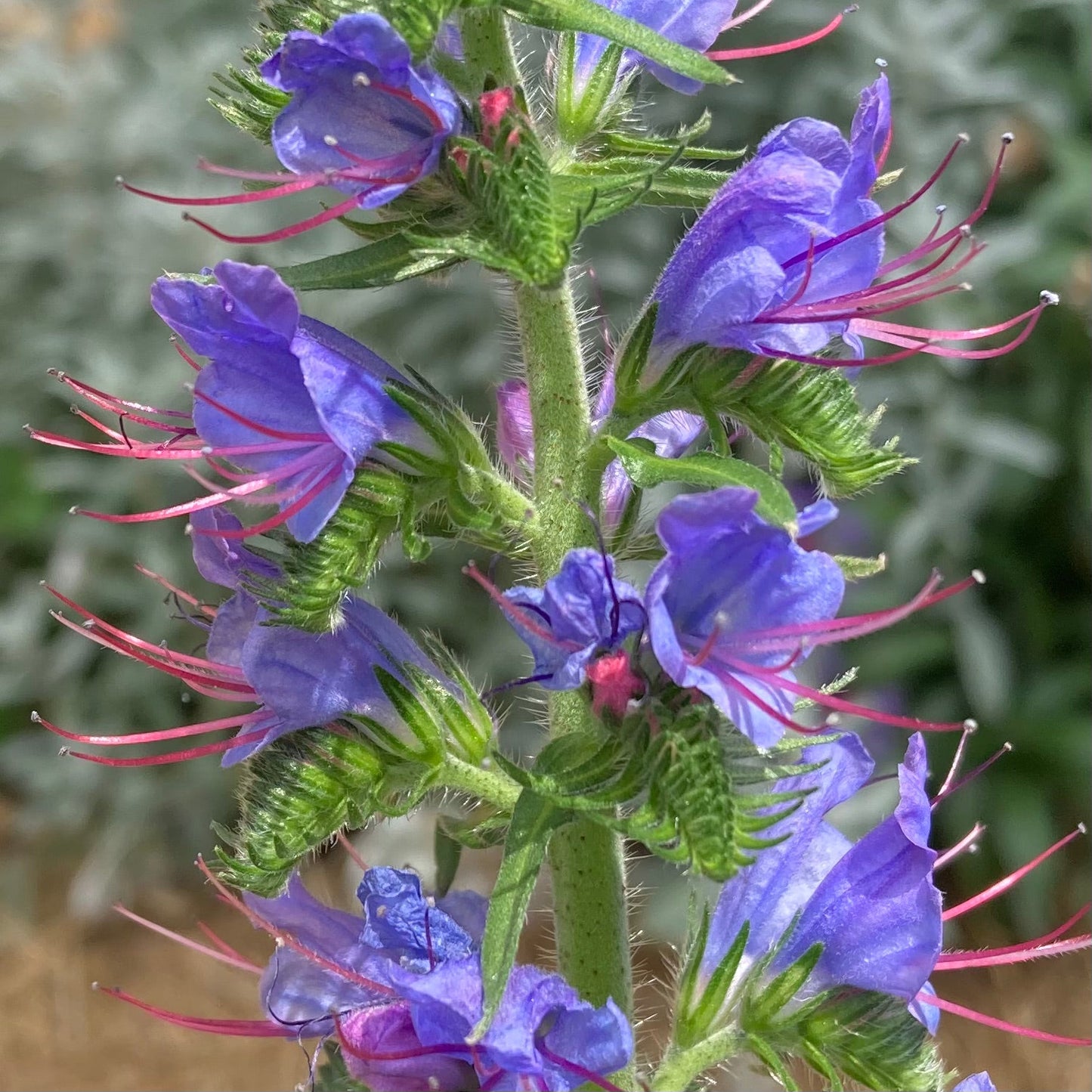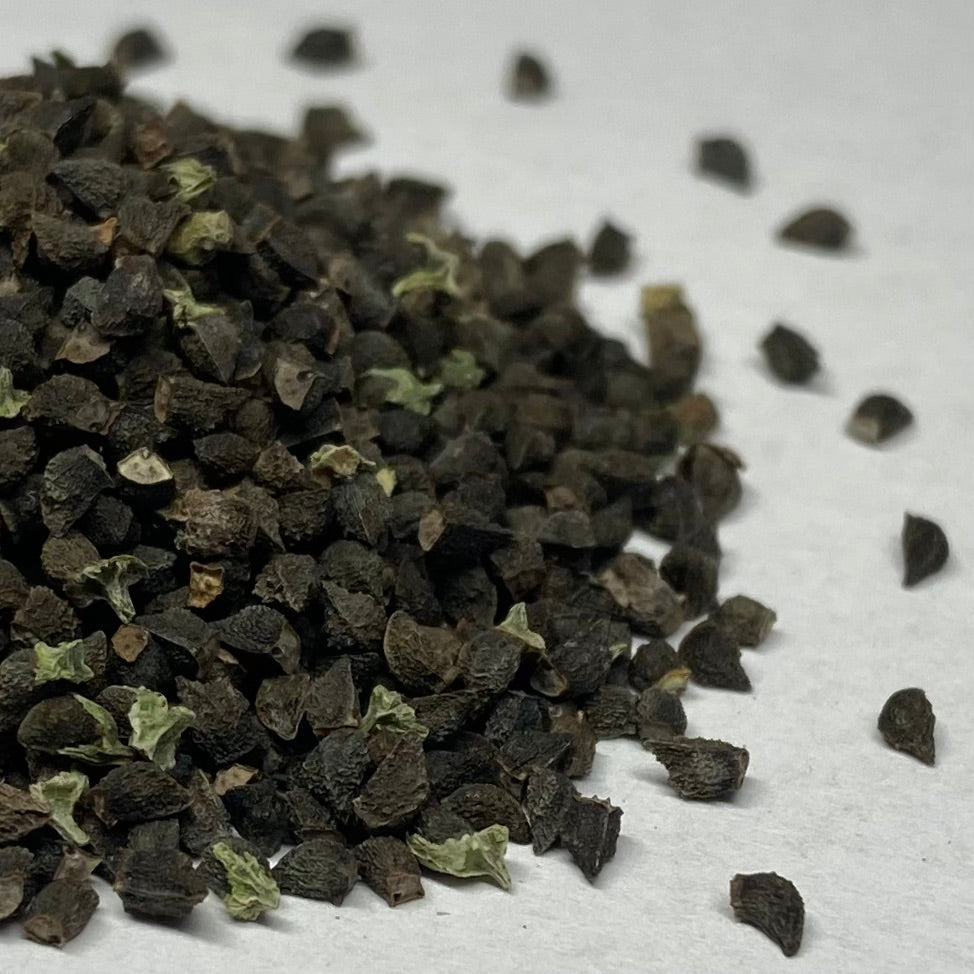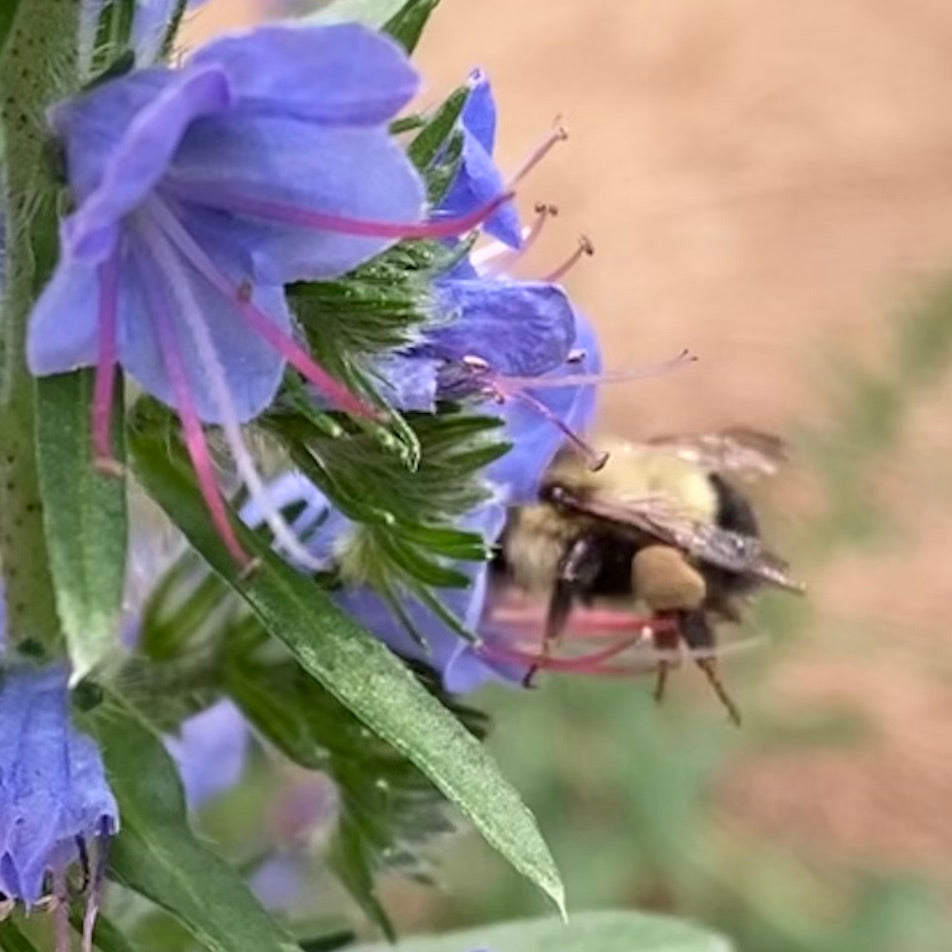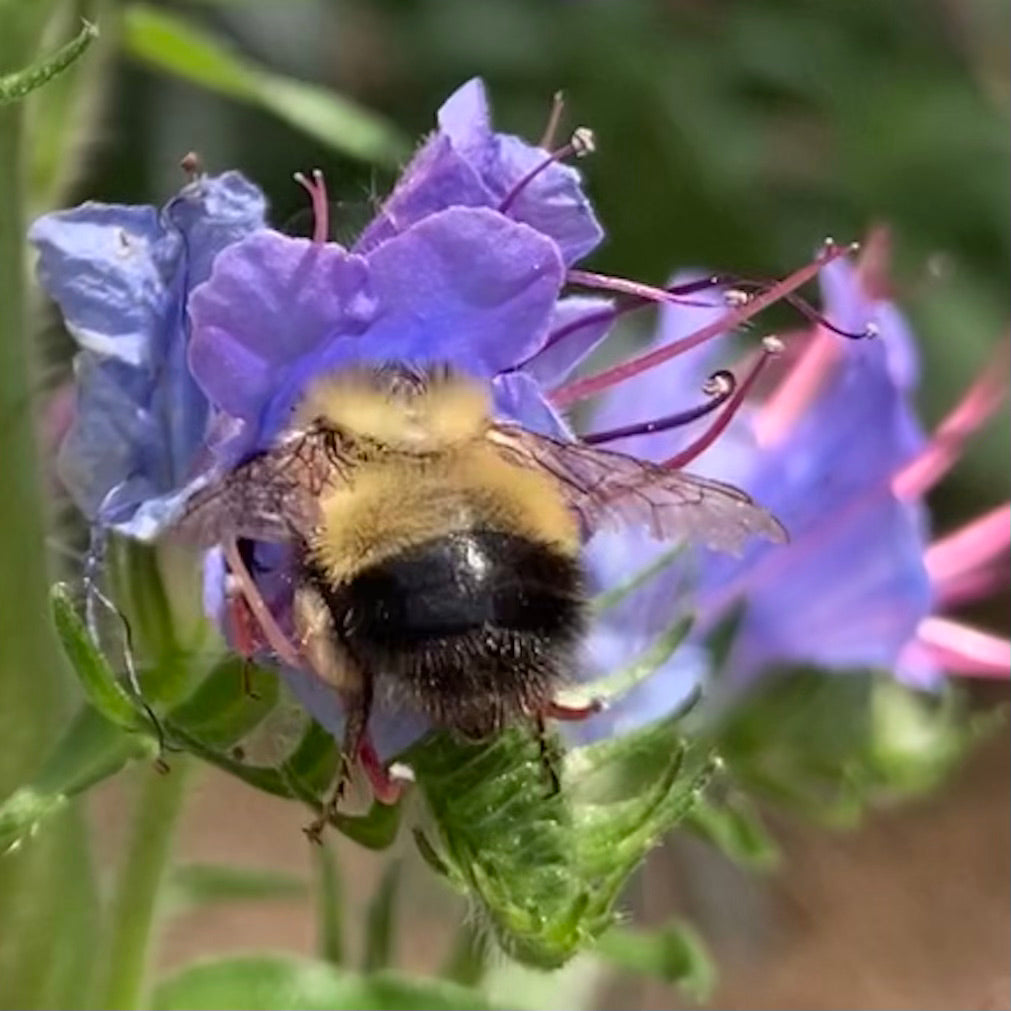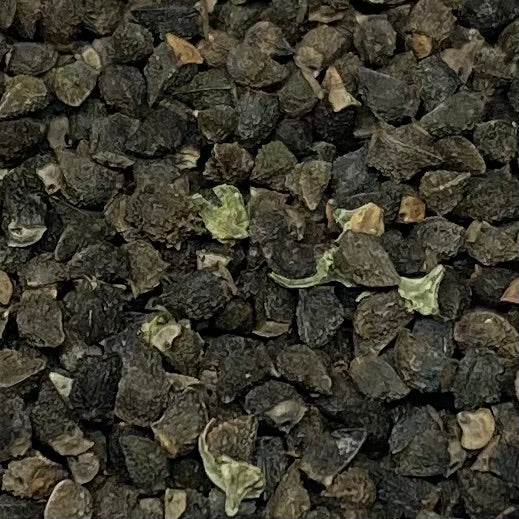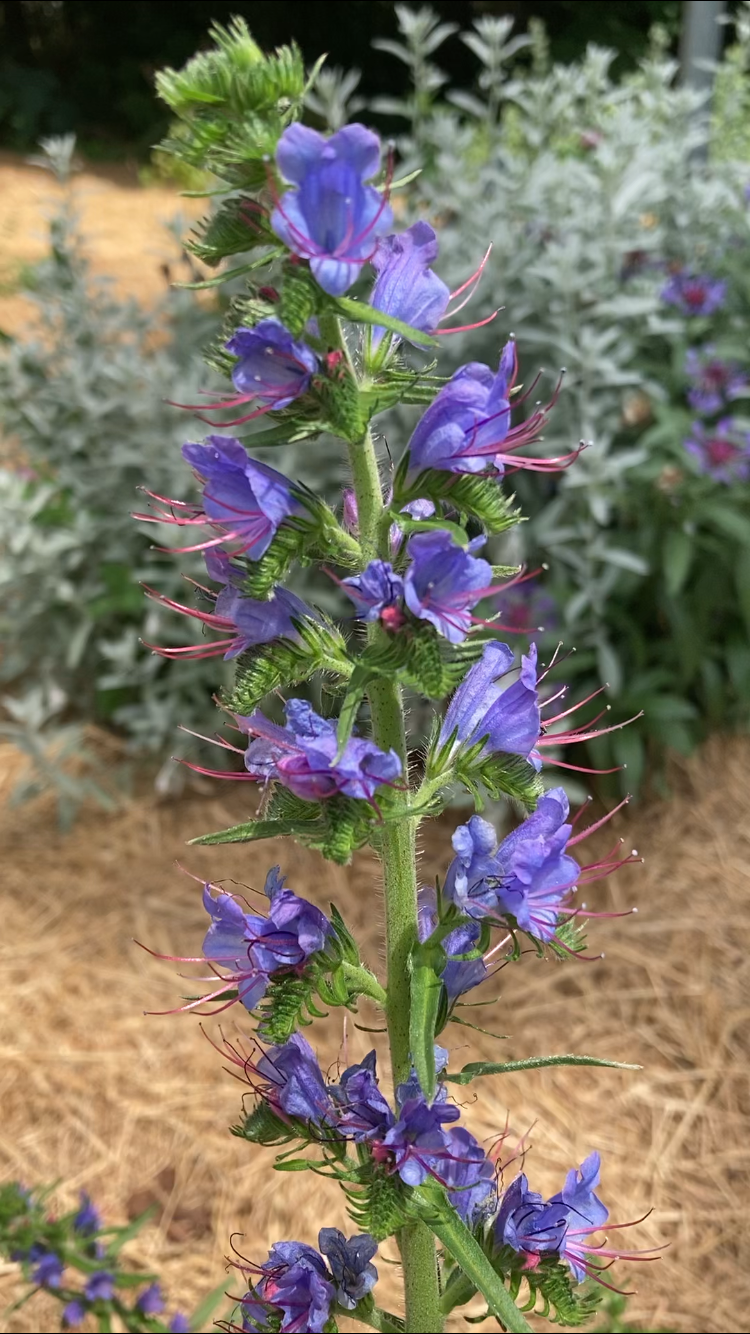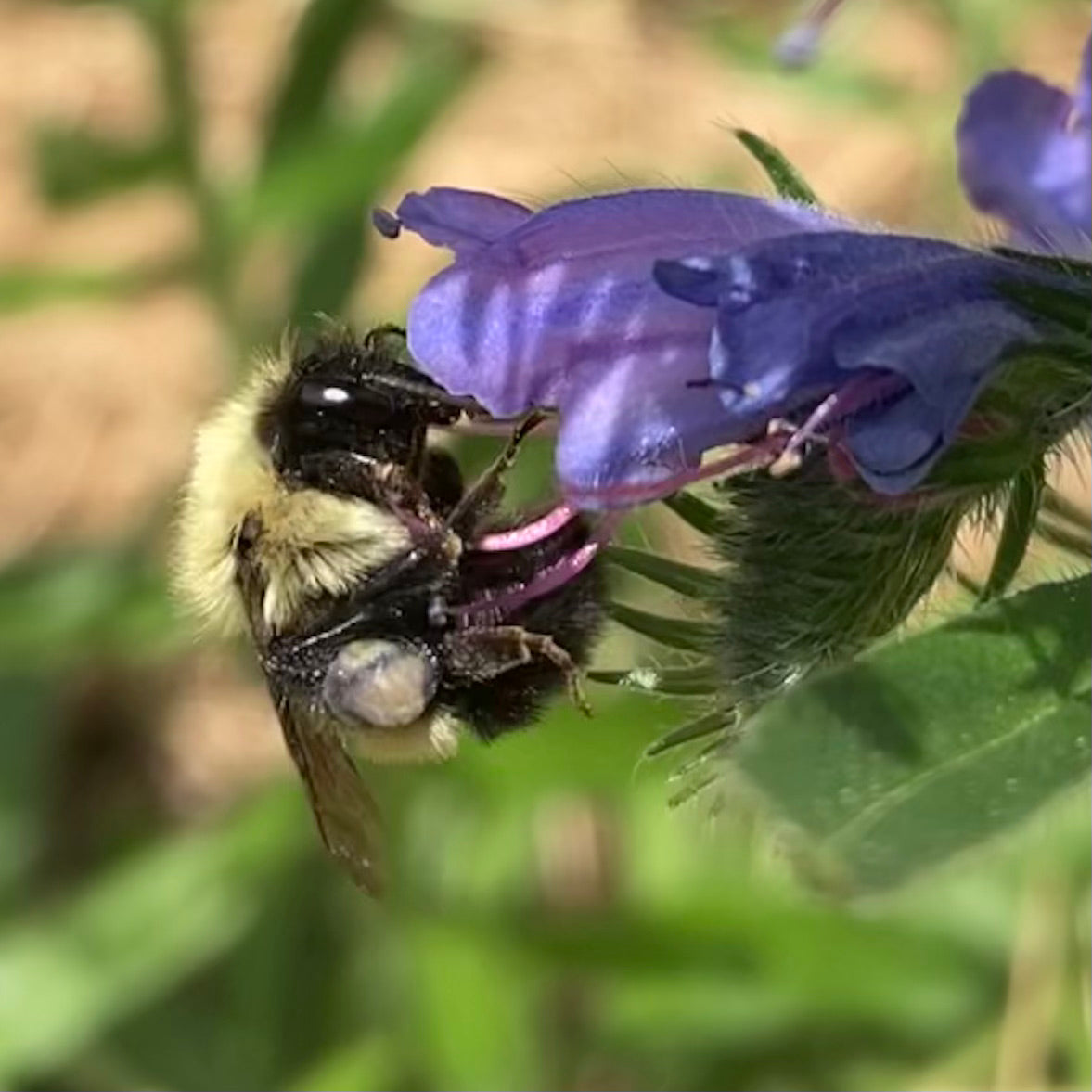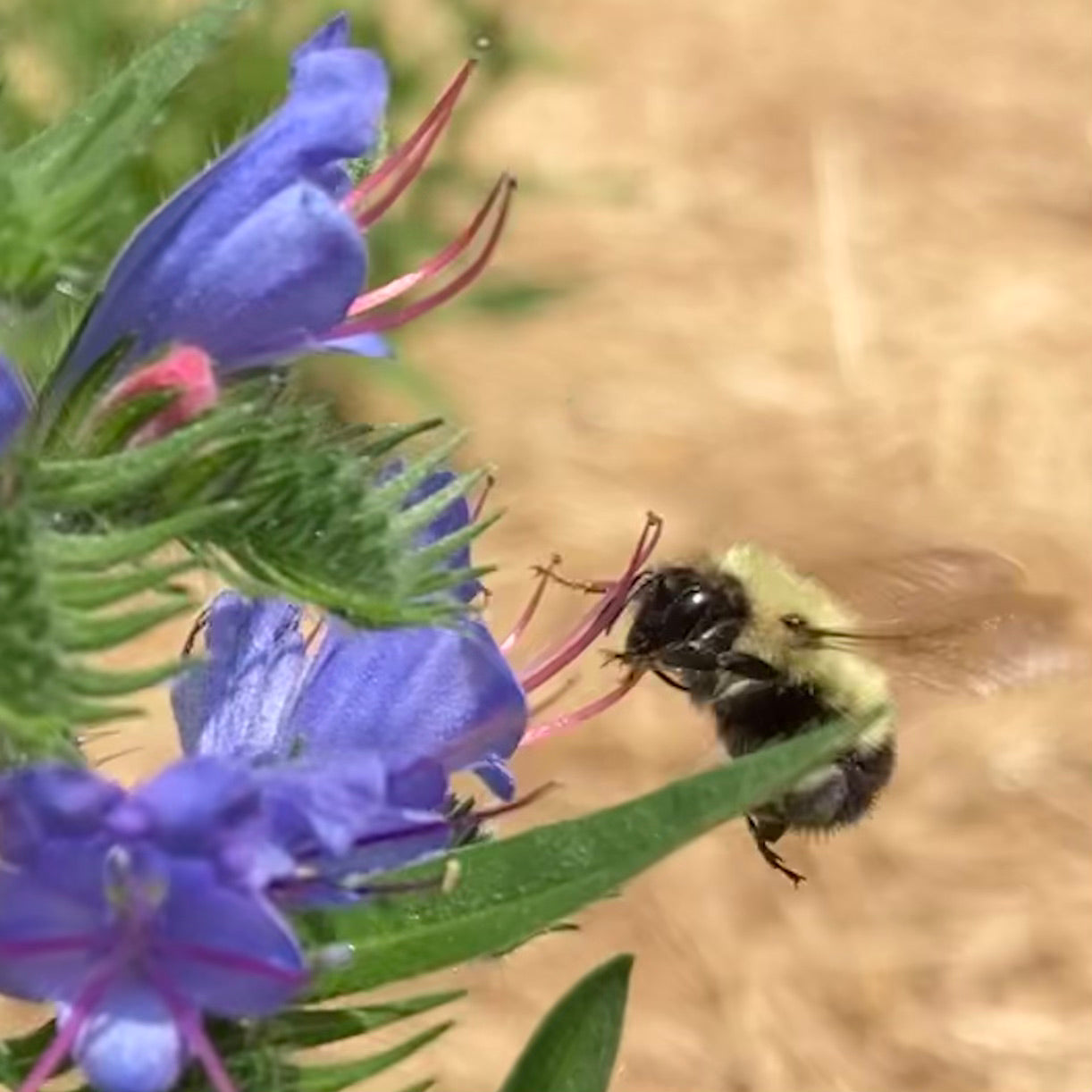Viper's Bugloss (Echium vulgare)
List Price: $4.00
Couldn't load pickup availability
*Designated an invasive species in the following states, no sale: AK, ID, MT, UT, WA, WV
Don’t be fooled by such a treacherous name— Viper’s Bugloss is called such a serpentine title for both the resemblance of the nutlets they form to a viper’s head, as well as their historical folk use as a treatment for viper bites. ‘Bugloss’ is a common British term for borages, the family that Echium vulgare is a part of. This word is also Greek for ‘ox’s tongue,’ in reference to the tongue-like leaves of most borage plants. Also referred to as Blueweed or Blue Thistle for its lovely blossoms, complemented by protruding crimson stamens, this plant blooms all the way from late spring to early fall. This long flowering season indicates Blue Thistle as a pollinator powerhouse. Not only does its season extend for months, but unlike many flowering plants, Echium vulgare continues to produce nectar all day long. They also produce prolific amounts of pollen. Honeybees will be overwhelmed with joy at the presence of such richly producing nectaries, as will as a sundry of other pollinators. Bumble bees, Halictid bees, and Mason bees would make many appearances at these blooms, with the Mason bee species Hoplitis anthocopoides being a specialized pollinator of Viper’s Bugloss. Ruby-throated hummingbirds and Painted Lady butterflies likely will stop by this borage plant too.
Native to Southern Europe, Viper’s Bugloss is quite hardy and low maintenance, able to flourish in soil disturbed by human intervention. However, it is considered invasive in some parts of North America given its ability to rampantly self-seed. To prevent over-proliferation of this plant, cut flower stalks before they can set seed, or choose not to plant them around open earth. Deadheading like this also has the great benefit of promoting new floral growth. Take note as well that, while many insect allies are fond of Echium vulgare, it is toxic to humans, as well as cattle and horses; be sure not to plant this around your livestock. Working with this plant might irritate the skin, so caution is best advised when handling. As long as one is intentional in their exchanges with Viper’s Bugloss, this wonderful plant will provide a massive benefit to the pollinators of the surrounding landscape. Bee friends will be grateful all season long for the bountiful source of sustenance.
